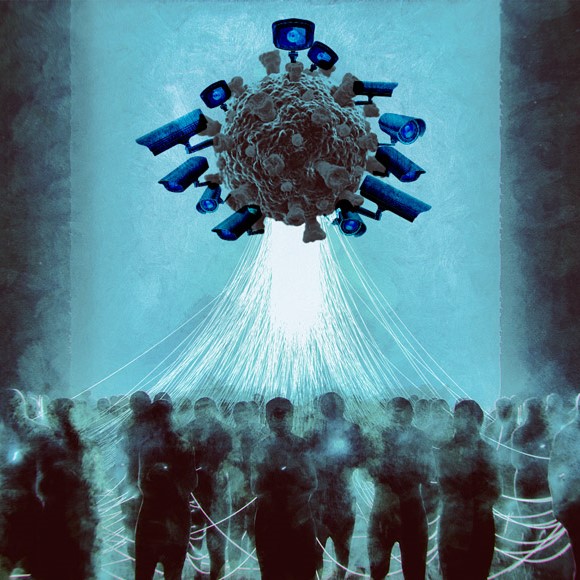Your cart is currently empty!

Where Are We Going?
In the shadows of our rapidly advancing society, a convergence of economic, technological, and political forces is steering us towards a future that eerily mirrors the dystopian landscapes of cyberpunk fiction. This silent march is driven by a combination of corporatism, economic consolidation, technological control, and deep societal polarization. Understanding these elements and their interconnectedness is crucial for those seeking to navigate and challenge this trajectory.
The Convergence of Key Elements
1. Dead Internet Theory and Bot Networks
The Dead Internet Theory posits that a significant portion of online activity is generated by bots and automated systems, creating the illusion of widespread consensus and engagement. These bot networks can manipulate public opinion by amplifying specific narratives, often those that align with corporate interests.
Example: During the early days of the COVID-19 pandemic, there was significant social media activity demanding that state governors enact strict lockdown measures. This demand was particularly prominent on social media platforms and within corporate institutions, but less so in grassroots movements. It’s plausible that bot networks played a role in amplifying these demands, creating a perception of overwhelming public support for lockdowns, which ultimately led to economic disruptions across states.
2. Economic Consolidation and Corporatism
Corporatism is a political or economic system in which power is controlled by large interest groups or corporations. These entities often work closely with the state to achieve mutual benefits, creating a system where corporate and governmental interests are deeply intertwined.
Economic power in the United States has increasingly consolidated into the hands of a few large corporations. This trend has roots going back to the post-World War II era, with the rise of the military-industrial complex, suburbanization, and consumer culture. The neoliberal policies of the 1980s further accelerated this consolidation through deregulation, privatization, and globalization. Today, multinational corporations wield immense influence over political decisions, regulatory frameworks, and societal norms.
Example: The 2008 financial crisis saw major financial institutions like Lehman Brothers collapse, leading to government bailouts for others deemed “too big to fail” such as Goldman Sachs and JPMorgan Chase. This consolidation of financial power and the influence these institutions hold over economic policy are prime examples of corporatism in action.
3. The Shift of the Overton Window
The Overton window, representing the range of acceptable political discourse, has shifted leftward toward neoliberalism in recent years. This shift reflects the growing advocacy for addressing systemic inequalities, which some argue has been co-opted by corporate interests seeking to centralize power within federal authority through government-regulated collective action. This shift from traditional liberalism to neoliberalism, supported by large institutions, also intensifies political polarization. The redefinition of political norms impacts public policy and societal expectations, contributing to the polarization between far-right and far-left ideologies.
Example: The rise of progressive movements advocating for policies such as mandating insurance coverage for gender transition surgery for children, mass amnesty, student loan forgiveness, and the federal authority required for the Green New Deal has shifted the political discourse in the United States significantly leftward. This shift has also led to a backlash from conservative factions, further polarizing the political landscape.
4. Societal Polarization into Extremist Factions
Society is increasingly polarized into factions of fascist and communist ideologies. Groups such as the Patriot Front on one side and the Revolutionary Communists of America on the other epitomize this divide. This polarization promotes a climate of conflict and instability, undermining democratic processes and creating a fragmented society vulnerable to manipulation by powerful entities.
Example: The 2017 clash in Charlottesville, where counter-protesters, including Antifa, confronted far-right groups such as those using the ‘Blood and Soil’ slogan, led to significant violence and subsequent attention to extremist factions. This event highlighted the rise of groups like the Patriot Front and the Revolutionary Communists of America, emphasizing the increasing volatility and organization of extremist factions. In the American context, the ‘right’ traditionally supports classical liberalism and conservative values, while the ‘left’ pushes for neoliberalism. National Socialists, despite their traditionalist elements, do not align with American conservative principles, and the media’s portrayal often mischaracterizes these groups as “far-right,” reflecting a media bias that obscures these distinctions.
5. Surveillance and Authoritarianism
The expansion of surveillance by both state and corporate entities justifies itself under the guise of security, efficiency, and convenience. This surveillance state erodes privacy and civil liberties, promoting an environment of control and compliance. Governments increasingly rely on technological tools provided by corporations to maintain order, further intertwining state and corporate interests.
Example: The revelations by Edward Snowden about the NSA’s extensive surveillance programs demonstrated how government agencies, often in collaboration with tech companies, conduct mass surveillance on citizens. This surveillance is justified as a measure for national security but significantly infringes on individual privacy rights.
Where These Trends Are Leading
The convergence of these elements is driving us towards a future characterized by:
1. Corporatist Control Amidst Polarization
Corporations are likely to continue entrenching their power, using their economic leverage and technological capabilities to dominate public discourse and political processes. The manipulation of public opinion through bot networks supports their agendas, while societal polarization prevents unified resistance.
2. Authoritarian Symbiosis with Corporations
Governments may increasingly rely on corporations for technological and economic stability. This symbiotic relationship enforces authoritarian measures to maintain order amidst societal unrest. Civil liberties are curtailed in the name of security and stability, creating a controlled and monitored society with limited personal freedoms.
3. Escalation of Extremism and Fragmentation
As extremist factions grow, violent clashes and civil unrest become more frequent. Governments respond with heavy-handed measures, while corporations exploit the chaos to consolidate their control over critical resources and infrastructure. This results in a deeply divided society marked by frequent conflict and authoritarian governance.
4. Economic Inequality and Social Stratification
Economic consolidation continues, with wealth concentrated in the hands of a few corporations and individuals. Social stratification intensifies, creating a small elite enjoying immense wealth and power while the majority face economic hardships and limited opportunities.
Most Likely Scenario
The convergence of economic consolidation, technological control, and societal polarization heavily favors this outcome. Corporations wield the most significant influence due to their economic power and control over information, shaping public opinion and political decisions. The fragmentation of society into polarized factions weakens collective resistance, allowing corporate interests to dominate unchallenged.
Implications: This scenario leads to a society where corporate power is unchecked, democratic processes are undermined, and individual freedoms are curtailed. Economic inequality and social stratification intensify, with the majority of the population dependent on or subservient to corporate entities.
The current trajectory suggests a movement towards a corporatist-controlled society amidst deep polarization and instability. While authoritarian measures and extremism play significant roles, the overarching influence of corporate power, facilitated by technological control and economic consolidation, appears to be the most dominant force shaping the likely outcome. Efforts to mitigate these trends must address the root causes of economic inequality, technological monopolization, and societal polarization.Stay informed and vigilant, and together we can work towards a future that values individual freedoms, democratic principles, and equal economic opportunities.
Read More: Building Contextual Knowledge
To delve deeper into the background and contextual knowledge necessary to better understand the forces shaping our society, consider the following:
Austrian Economics
- “Human Action: A Treatise on Economics” by Ludwig von Mises: A foundational text in Austrian economics that explains the principles of individual choice and market dynamics.
- “Man, Economy, and State with Power and Market” by Murray Rothbard: A comprehensive analysis of economic theory from an Austrian perspective.
- “The Road to Serfdom” by Friedrich A. Hayek: Discusses the dangers of central planning and the importance of individual liberty.
Economic Consolidation
- “The Age of Surveillance Capitalism: The Fight for a Human Future at the New Frontier of Power” by Shoshana Zuboff: Examines how large tech companies have consolidated power and control over data.
- “Capital in the Twenty-First Century” by Thomas Piketty: Analyzes wealth inequality and economic concentration over the past few centuries.
- “The Big Short: Inside the Doomsday Machine” by Michael Lewis: Explores the financial practices that led to the 2008 financial crisis and the consolidation of financial power.
Corporatism
- “Corporatism: The Secret Government of the New World Order” by Jeffrey Grupp: Provides an in-depth look at the rise of corporatism and its implications for society.
- “No Logo: Taking Aim at the Brand Bullies” by Naomi Klein: Critiques corporate practices and the influence of branding on culture and economy.
- “The Corporation: The Pathological Pursuit of Profit and Power” by Joel Bakan: Analyzes the corporate structure and its impact on society and democracy.
Surveillance State
- “1984” by George Orwell: A dystopian novel that explores themes of surveillance, control, and authoritarianism.
- “Surveillance Valley: The Secret Military History of the Internet” by Yasha Levine: Investigates the military origins of the internet and its use for surveillance.
- “Permanent Record” by Edward Snowden: The memoir of the whistleblower who exposed the extent of government surveillance.
Political Polarization
- “The Righteous Mind: Why Good People Are Divided by Politics and Religion” by Jonathan Haidt: Explores the psychological underpinnings of political polarization.
- **”Polarized: Making Sense of a Divided America” by James E. Campbell**: Analyzes the causes and consequences of political polarization in the U.S.
- “Why We’re Polarized” by Ezra Klein: Examines the structural and psychological reasons behind the increasing political divide.

Leave a Reply